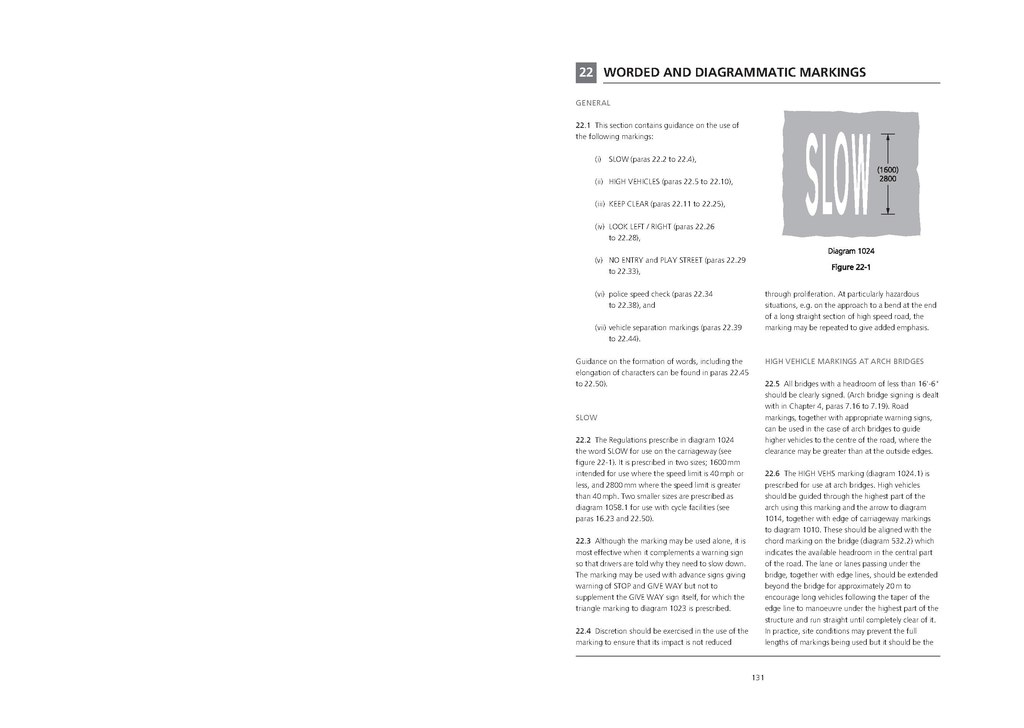22WORDED AND DIAGRAMMATIC MARKINGS
GENERAL
22.1 This section contains guidance on the use of the following markings:
(i) SLOW (paras 22.2 to 22.4),
(ii) HIGH VEHICLES (paras 22.5 to 22.10),
(iii) KEEP CLEAR (paras 22.11 to 22.25),
(iv) LOOK LEFT / RIGHT (paras 22.26 to 22.28),
(v) NO ENTRY and PLAY STREET (paras 22.29 to 22.33),
(vi) police speed check (paras 22.34 to 22.38), and
(vii) vehicle separation markings (paras 22.39 to 22.44).
Guidance on the formation of words, including the elongation of characters can be found in paras 22.45 to 22.50).
SLOW
22.2 The Regulations prescribe in diagram 1024 the word SLOW for use on the carriageway (see figure 22-1). It is prescribed in two sizes; 1600 mm intended for use where the speed limit is 40 mph or less, and 2800 mm where the speed limit is greater than 40 mph. Two smaller sizes are prescribed as diagram 1058.1 for use with cycle facilities (see paras 16.23 and 22.50).
22.3 Although the marking may be used alone, it is most effective when it complements a warning sign so that drivers are told why they need to slow down. The marking may be used with advance signs giving warning of STOP and GIVE WAY but not to supplement the GIVE WAY sign itself, for which the triangle marking to diagram 1023 is prescribed.
22.4 Discretion should be exercised in the use of the marking to ensure that its impact is not reduced through proliferation. At particularly hazardous situations, e.g. on the approach to a bend at the end of a long straight section of high speed road, the marking may be repeated to give added emphasis.

HIGH VEHICLE MARKINGS AT ARCH BRIDGES
22.5 All bridges with a headroom of less than 16'-6" should be clearly signed. (Arch bridge signing is dealt with in Chapter 4, paras 7.16 to 7.19). Road markings, together with appropriate warning signs, can be used in the case of arch bridges to guide higher vehicles to the centre of the road, where the clearance may be greater than at the outside edges.
22.6 The HIGH VEHS marking (diagram 1024.1) is prescribed for use at arch bridges. High vehicles should be guided through the highest part of the arch using this marking and the arrow to diagram 1014, together with edge of carriageway markings to diagram 1010. These should be aligned with the chord marking on the bridge (diagram 532.2) which indicates the available headroom in the central part of the road. The lane or lanes passing under the bridge, together with edge lines, should be extended beyond the bridge for approximately 20 m to encourage long vehicles following the taper of the edge line to manoeuvre under the highest part of the structure and run straight until completely clear of it. In practice, site conditions may prevent the full lengths of markings being used but it should be the
131
